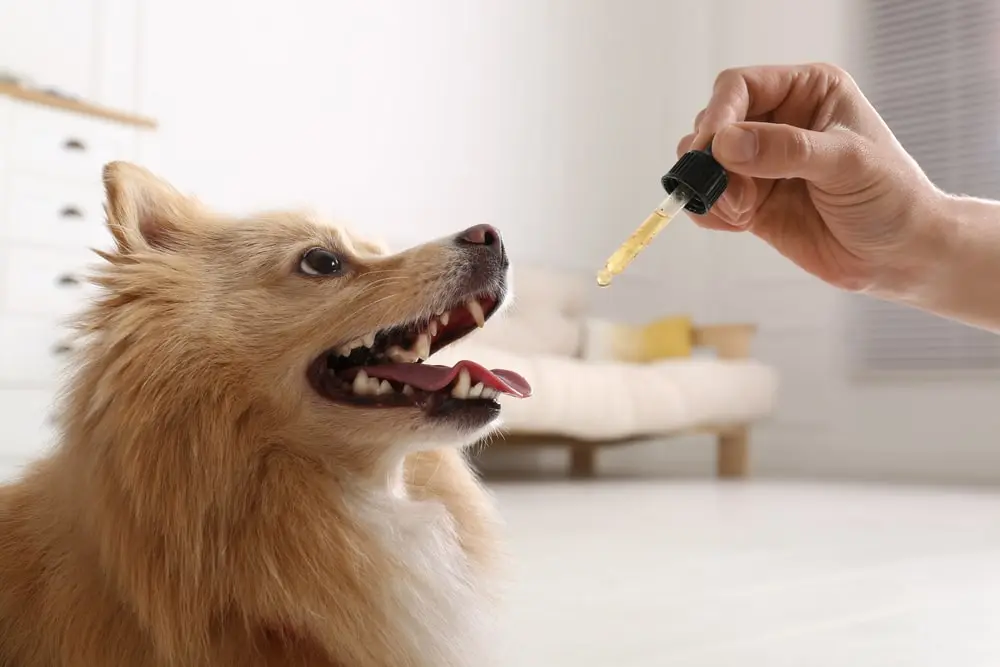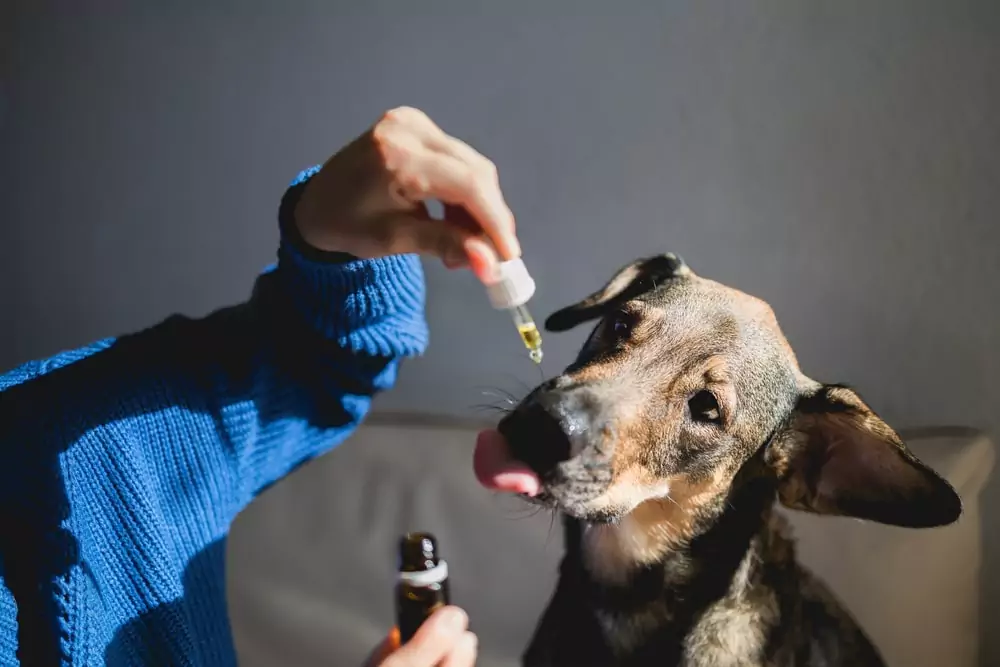PET CARE
Throughout human history, essential oils have been used around the globe in traditional medicine to cure a variety of health concerns.1 Today, the use of aromatic oils has expanded beyond health and wellness products, including everything from cosmetics and household cleaning agents to foods and pesticides.
With essential oils all around us, you may wonder, are essential oils safe for cats and dogs?
Here’s the scoop on essential oils and their impact on pets, according to veterinary experts. Find out whether essential oils are safe for dogs and cats, which oils are considered toxic, and how to best protect your pets from potential harm.
What Are Essential Oils?
Essential oils are a volatile organic compound (in liquid form) made from plant parts, typically, through a distillation process.1 You may find these oils sold as pure concentrated — like 100% lavender oil — or they may be mixed with other oils and ingredients.
Veterinary surgeon Dr. Edele Grey, MVB weighs in, explaining, “Essential oils are highly concentrated compounds harvested from plants that are highly volatile and easily absorbed into the cells of the body.”2
“Some are known to reduce anxiety or have anti-inflammatory and antibiotic effects,” she says. However, that doesn’t mean they’re harmless. “While they can have excellent health benefits, essential oils can also pose dangers to our furry friends,” Dr. Grey warns.2
Essential Oil Poisoning May Hurt Your Pet and Your Wallet
The Safety of Essential Oils With Pets
According to veterinarians, when asked if essential oils are safe, a simple “yes” or “no” doesn’t suffice. Experts recommend pet parents use caution when exposing their pets to essential oils, even those generally considered to be beneficial.
“There’s little research into essential oils,” says Dr. Grey.2 And Dr. Bethany Hsia, DVM, co-founder of CodaPet, agrees. “While some essential oils can be safe for pets when used properly, others can be toxic and even life-threatening,” Hsia warns.3
In addition, there are various factors — such as the oil’s concentration, whether it’s natural or synthetic, and how it’s used (topically, ingested, or diffused) — that could make even “pet-safe” essential oils potentially hazardous.
To help you keep your pet safe from harmful essential oils, keep reading to learn which oils may be safe or toxic to dogs and cats.
Dogs and Essential Oils
Dogs are typically less sensitive to essential oils compared to cats — making them a bit safer for use around dogs.4 However, their safety can also depend on how your dog comes into contact with the oil.
For example, if your dog inhales oil particles, it could cause respiratory issues. Or if your dog licks some oil, it could cause gastrointestinal upset or mouth irritation.4 Keep in mind that dogs with liver disease and puppies may be more sensitive to the effects of any essential oil.5
What essential oils are safe for dogs?
While caution is key, some oils are considered safer for our canine companions. Here are a few dog-safe options:4
- Bergamot
- Chamomile
- Frankincense
- Ginger
- Lavender
- Myrrh
- Rosemary
Remember, even "safe" oils need to be treated with respect. Do your research on each oil's potential effects, and always chat with your vet before introducing them to your dog's world. Proper dilution and appropriate use are critical to ensuring the safety of any essential oil for dogs.
What essential oils are bad for dogs?
Some oils can be harmful to dogs. According to Pet Poison Hotline, they receive the most essential oil toxicity calls about these oils:6
- Wintergreen
- Pennyroyal
- Pine
- Tea tree (melaleuca)
Other popular essential oils that may be toxic or harmful to your dog can include (but are not limited to):4,5
- Cinnamon
- Citrus
- Clove
- Hyssop
- Lemongrass
- Peppermint
- Sweet birch
- Ylang ylang
If ingested or applied topically in large doses, these essential oils can be toxic or even fatal to dogs.5 In case of accidental ingestion or adverse reactions, contact your vet as soon as possible to get your next steps.
Cats and Essential Oils
Essential oils may pose a greater risk to cats because they lack the liver enzymes necessary to effectively metabolize certain toxins.7 Plus, cats are self-grooming animals — exposure to essential oils on their coats can lead to unintentional ingestion and toxicity. Even small amounts of these oils can cause adverse reactions in cats and prove fatal in severe cases.7
What essential oils are safe for cats?
Since cats are much more sensitive to essential oils, and they can cause a more serious negative reaction, it’s a good idea to not use essential oils for or around your cat. Talk with your veterinarian first to see if they recommend any cat-safe oils, and discuss how to use them. Dr. Grey advises against using any oils topically.
What essential oils are bad for cats?
Dr. Grey states, “Cats, in particular, are sensitive to the potentially toxic effects of essential oils. I urge clients to double-check with a veterinarian if they are considering using essential oils on their pets to ensure their safety.” Some of the oils that can be harmful to cats can include:7,8
- Cinnamon
- Citrus
- Clove
- Eucalyptus
- Lavender
- Pennyroyal
- Peppermint
- Pine
- Sweet birch
- Tea tree
- Wintergreen
- Ylang ylang
This isn’t an exhaustive list. Contact your vet if you have questions about the safety of a particular essential oil or fear your cat has been exposed to one.
Signs of Essential Oil Toxicity in Pets
Even “pet-safe” essential oils can pose a risk. Being able to recognize the signs of essential oil poisoning in dogs or cats can be crucial in helping them get the medical care they need. Signs of poisoning from essential oils can include:5,7
- Vomiting
- Difficulty breathing
- Altered mental state
- Weakness or lethargy
- Pawing at the face/mouth
- Drooling
- Redness or burns on the skin or mouth
- Tremors
According to Dr. Grey, essential oil poisoning can happen in stages — so some signs may not be immediately apparent. “The first signs you may notice are salivation, drooling, pawing at the face/mouth, vomiting, redness or burns of the gums and tongue or even the skin if applied directly to it,” she explains.
“After that, you may see difficulty breathing, feeling cold, muscle tremors, lethargy, ataxia (incoordination), or even seizures and coma in extreme cases,” Dr. Grey says.
Since essential oils are made from plants, a good rule of thumb to follow is that any plant toxic to cats or dogs will likely also be poisonous in its concentrated essential oil form. The ASPCA has a list of toxic plants to cats and toxic plants to dogs you can review when doing your research.9,10
What to do if your pet is having an adverse reaction
If you suspect your pet may have ingested or come into contact with a toxic essential oil, reach out to your veterinarian immediately or seek emergency veterinary care. Vets advise against inducing vomiting, since it may cause more harm as the essential oil comes back up. If there’s any oil on their fur or skin, do your best to wash it off with dish soap.5,7
Depending on your pet’s condition, a vet may run bloodwork to see if their kidneys or liver have been affected and/or administer intravenous (IV) fluids. Medications may be used to help ease pain, protect organs, or prevent vomiting.5,7
How To Safely Use Essential Oils Around Your Pets
With essential oils being in a wide variety of products, you may not be able to completely avoid using them. Here are a few tips to enjoy them safely with your cat or dog in the house:
- Store essential oils out of reach to prevent accidental ingestion, and wash your hands after handling them.
- Don’t let your pet lick you if you use skincare products with essential oils or use oils directly on your skin.
- Ensure there’s good air circulation in the room when using essential oils in a diffuser or heater. This includes candles and liquid potpourri.
- If your cleaning products include essential oils, ensure the surface dries before allowing your pet to have any contact with the area.
Dog rehabilitation practitioner Dr. Sabrina Kong adds, “While some essential oils can offer benefits, their risks to pets, especially when misused, often outweigh these advantages. Using essential oils around pets requires vigilance, an understanding of the risks involved, and professional advice to ensure their well-being.”11
Help Diffuse Financial Tension With Pet Insurance
If your dog or cat has an adverse reaction after being exposed to essential oils, they may need swift medical attention. A MetLife Pet Insurance policy can provide peace of mind in the event your pet needs treatment.
You can get reimbursed up to 90% of covered expenses on accidents and illnesses.12 Plus, when you enroll in a dog insurance or cat insurance policy, you have access to a 24/7 vet chat.13,14 This can be helpful when you want answers to a question and your vet’s busy — like whether the oil you plan to buy is safe for your pet.
Don’t let finances cause tension around getting your pet the care they need. Prepare for unexpected health costs by enrolling in a MetLife Pet policy. Start by getting your free quote today.


